Affiliate links on Android Authority may earn us a commission. Learn more.
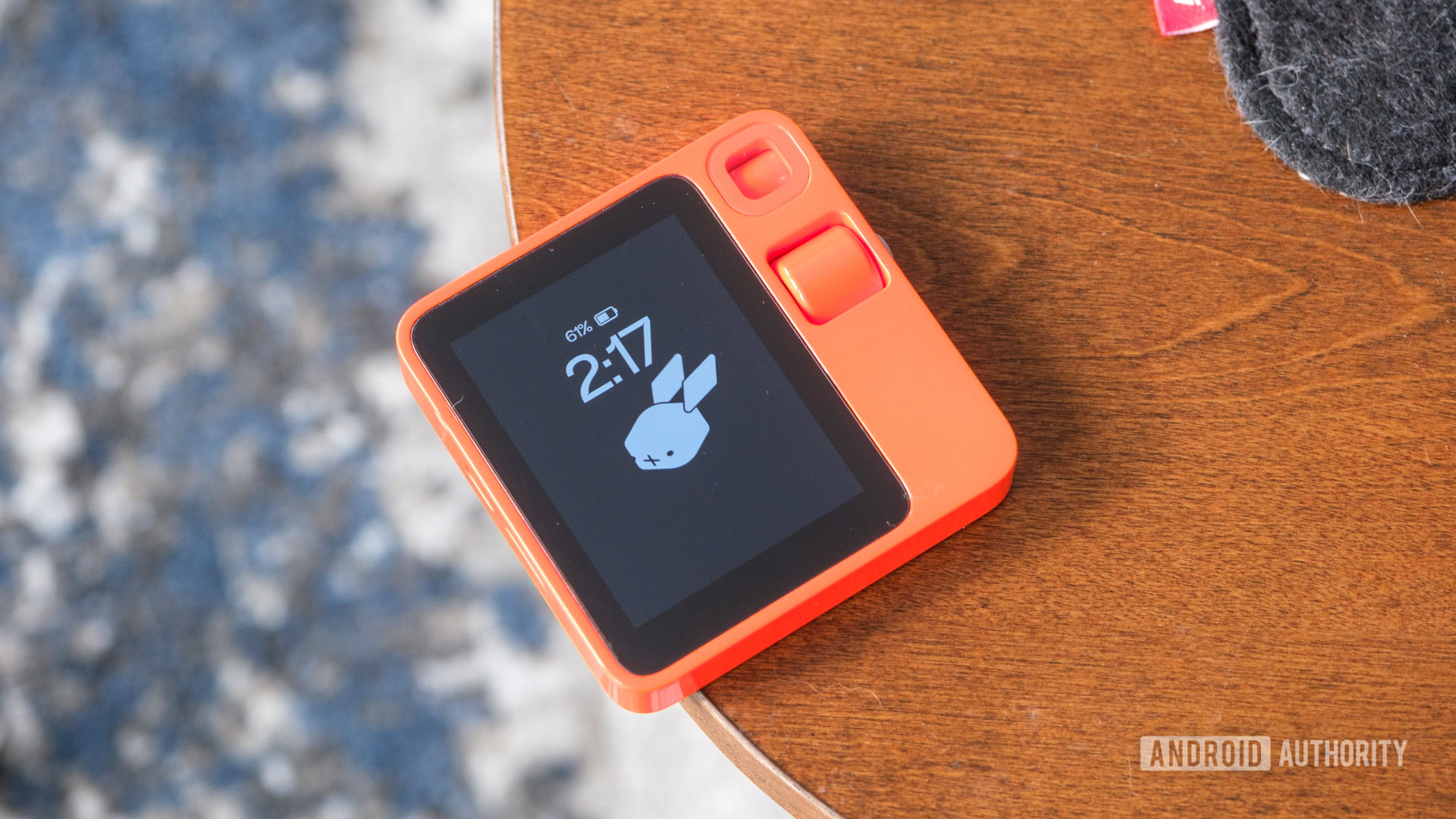
Rabbit R1
What we like
What we don't like
Rabbit R1
By now, you’ve probably seen the Rabbit R1 — the $199, bright orange, AI-powered companion gadget — all over the internet. It’s been making waves for its retro-inspired design, reasonably approachable price tag (with one colossal asterisk), and its vaunted ability to quickly answer straightforward questions. Unfortunately, you’ve probably also seen almost every reviewer under the sun roasting the Teenage Engineering-designed companion for its limited set of day-one features, app integrations that only work with a healthy dose of luck, and its tendency to get the more complicated queries completely wrong.
So, which version of the Rabbit R1 is real, and which would vanish when put into a magician’s hat? Is it a capable AI companion powered by a cloud-based “Large Action Model,” or is it just specialized hardware for a platform that should be an app (and, in some ways, provably already is)? Let’s find out!
How I’m testing the Rabbit R1
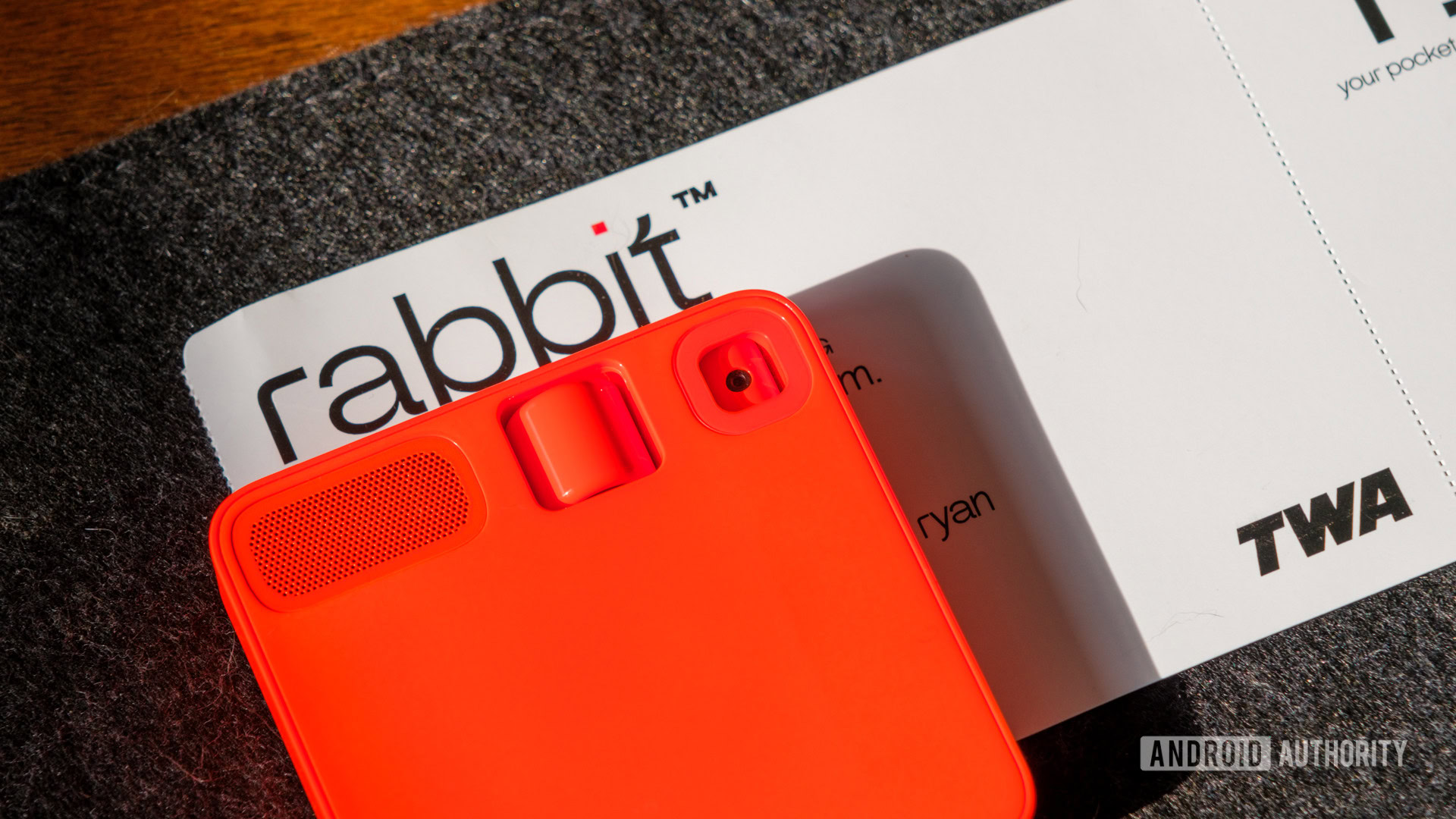
Rather than a traditional review, I wanted to try something a little different: document a single day of testing to see how the Rabbit R1 handled my queries and needs as a would-be trusty AI companion.
Before we jump into my long day, we should probably set some ground rules. After all, it’s hard to test a device that — as Rabbit has been very keen to point out in the pre-launch marketing and interviews — is not meant to replace your phone, yet does many of the same things you expect your phone to do. So, with that in mind, I gave myself a few guidelines to direct my testing.
The Rabbit R1 may not be intended as a smartphone replacement, but it wants to do a lot of things your phone can.
The first is that I would start my day by pulling the R1 off its charger in the morning, giving it a full battery in hopes of it lasting all day long. I should also mention that I did my testing following the first official OTA update, which promised to make the R1’s battery life five times better (if you can believe it).
Next, I would treat the R1 as my primary device for the day, reaching for it over my phone in any situation where it could be helpful. That means asking questions, playing music, and using specific apps would all be run through the R1 and relying on the Large Action Model that acts as basically the heart of everything the R1 does. This takes your inputs — either verbal or written — and translates them into actions using virtual cloud-based environments. Essentially, the LAM is supposed to act like your personal butler, interfacing with apps and services so that you don’t have to. I’ll do my best to use both voice commands and type out questions on the R1 using Terminal Mode — the world’s tiniest keyboard and the only time the R1’s touch screen actually supports, well, touching.
The third, and perhaps most challenging, limitation I set for myself is that I wouldn’t have a SIM card in my Rabbit R1. After all, CEO Jesse Lyu and crew make a big deal about the fact that you can use the R1 without any subscription fee, so I’ll do just that. Of course, I would still have to connect the R1 to my phone’s hotspot to use data while away from a Wi-Fi connection… which is still kind of like paying a subscription fee just to my carrier instead of to Rabbit itself.
With that, let’s head down the rabbit hole.
Start with the basics
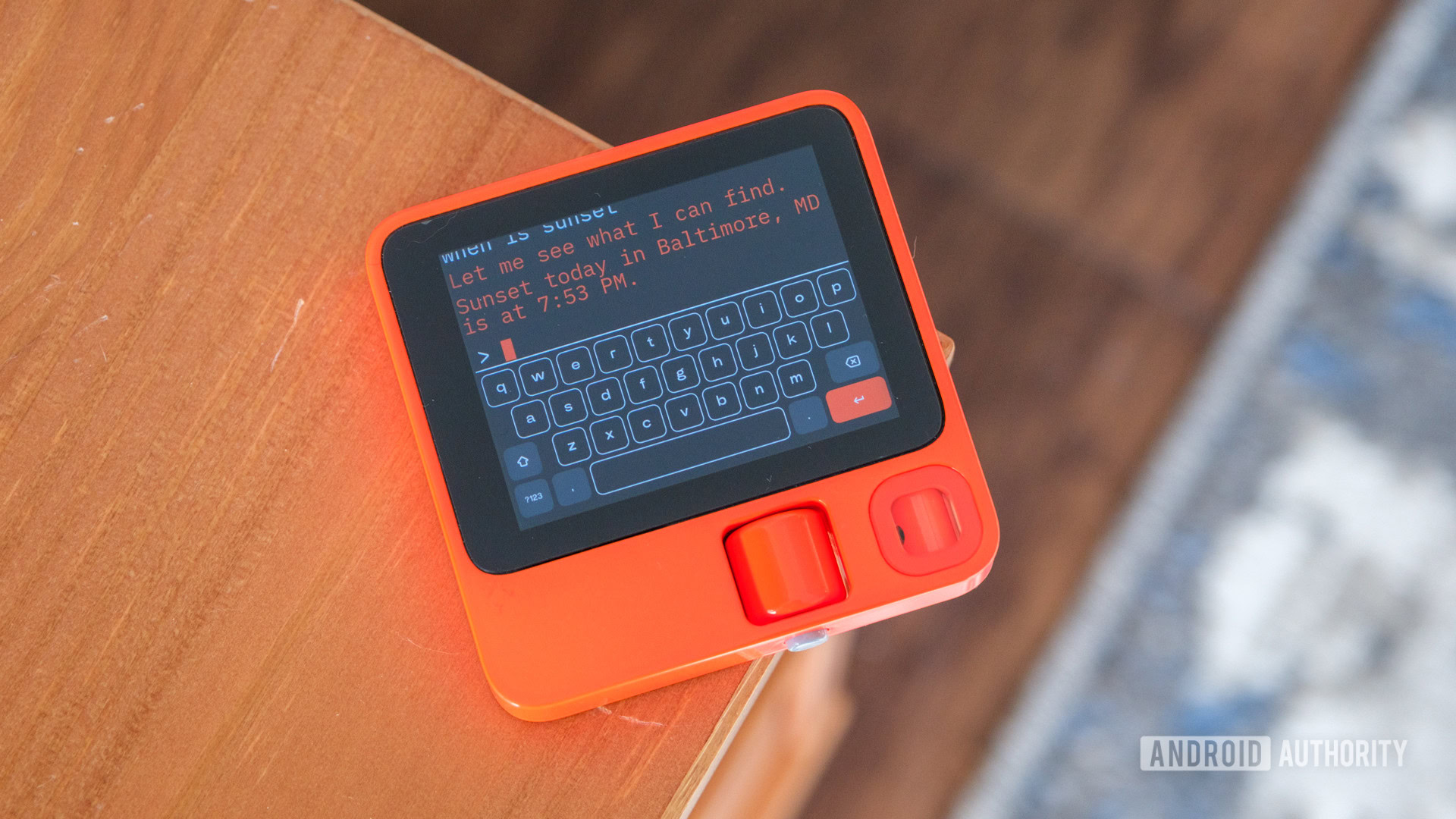
As promised, I started my day by taking the R1 off a USB-C charger. You don’t get a cable or a charger bundled with your R1, just the companion and a clear plastic carrying case modeled off old cassette boxes, so I provided my own.
I figured I would give the R1 a pretty easy start to my day as I headed down to my apartment gym for a workout… only there’s not much the companion can do while I’m there. Sure, I could pair Bluetooth headphones and stream Spotify, but I already use my phone to manage workouts, so I would have to bring two pairs of headphones or switch my pairing from one to the other halfway through. It’s 8:00 AM, and the R1 has already given me a headache.
Instead, I left the companion on my kitchen counter to keep an eye on its post-update passive battery drain, which is much improved — it dropped 3% during my hour at the gym, far better than the previous 10 to 12% per hour rate I and many others saw before the first software patch dropped.
The R1 can stream Spotify, but it's not the most reliable of DJs.
After my workout, I still wanted to test out the R1’s Spotify chops, so I requested the album Sam’s Town by The Killers as I hopped in the shower. It started well enough, playing the title track, but the R1 didn’t seem to understand that I wanted the entire album, immediately jumping to other artists instead. Oh, and the only way to control the R1 is via the multifunction button and analog scroll wheel, which isn’t really possible while you’re in the shower. Further, if you choose to connect a pair of Bluetooth headphones, no matter how good they are, the R1 only supports mono playback and, in my experience, stutters quite badly when trying to stream to headphones.
Since I’m well underway with my morning routine, I figured it would be good to test Rabbit’s Large Action Model with a few softballs. The first was whether or not my adopted hometown Baltimore Orioles won the night before (they hadn’t). Surprisingly, the R1 gave me the correct result, opponent, and score — in my earliest tests, it had typically nailed the first two but whiffed on the third. Given that the LAM is meant to understand human intentions with computers, it’s good to see the R1 deliver more information than I explicitly asked for, but less encouraging to see it frequently offer wrong answers.
The other softball question I hoped the R1 could help me with was which coffee shop is closest to my apartment. Granted, the device doesn’t have my exact location (or so it tells me), but it knows I’m in Baltimore, so I would expect it to respond accordingly. Instead, it gave me a result way out in Towson, which is about a half-hour drive from me and would require me to drive past almost a dozen other coffee shops. So, forget that. I grabbed my bike, headed to a much closer spot, and got to work.
Advanced features may vary
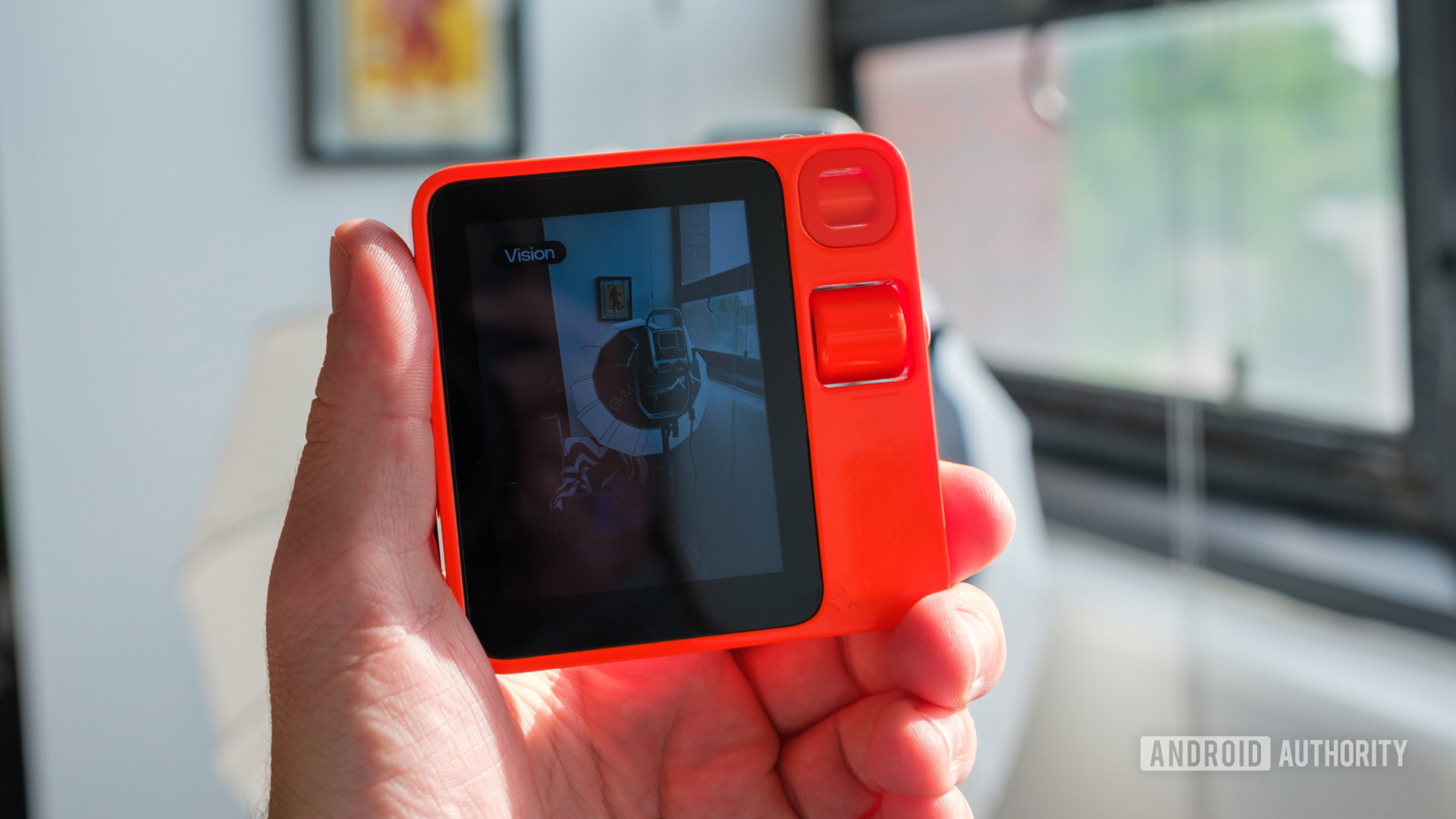
The Rabbit R1 hasn’t exactly stuck its landing so far, and we’re only through the easy part of the day. Once I hit my productivity stride, I decided to try something tougher: ordering lunch through DoorDash.
I pulled up the R1 and asked it to order from a local Vietnamese place, and I was thoroughly shocked when it worked the first time. Of course, it took about a minute and a half to load the menu, and even then, I only had about five options to choose from, but DoorDash as a whole was working. I picked from my very limited options using the analog scroll wheel and multifunction button, trusted whatever source of money the R1 associated with my account (there’s no way to actually choose), and sat down to wait for my food.
I shouldn't be this surprised that the Rabbit R1 actually achieved one of its launch day goals.
While it’s exciting that DoorDash worked, and my banh mi was delicious, it’s probably not a great sign that I’m hailing this as impressive. It’s nothing that your phone can’t already do, and there’s no way to get around the incredibly limited menu that Rabbit puts in front of you. It was also an anomaly — the DoorDash feature often fails, and many of my peers who have tested the device have never had a successful meal served up by the R1.
Up next was the R1’s live recorder feature. I did my testing before Apple’s iPad event and wanted some help researching what to expect from the launch, so I opened a YouTube video and requested the R1 to record it and give me a summary. It once again stuck the landing, giving me concise bullet points, though I had to go to the Rabbit Hole web portal to retrieve them. Unfortunately, the Rabbit Hole — where you can link apps, summon a journal of previous requests, and manage your settings — doesn’t work on mobile devices, so you have to boot up a laptop or desktop to access its contents.
Moving on, it’s time for what might be the R1’s least helpful feature so far: Vision Mode. The idea is that you can point the 8MP rotating camera at objects to ask about them, but I’ve yet to get an answer that I couldn’t figure out with my own two eyes. For example, I held up a few vinyl records in front of the R1 and simply asked it what tracks were on them — something I could find out by flipping the records over.
At first, the R1 didn’t want to acknowledge them as records, instead calling the cover art a poster, before identifying it as album art. Even when the R1 correctly identified the cover of Hotel California by The Eagles as such, it couldn’t help me out with what songs I could expect to hear. Funny enough, if I ask the companion what songs are on Hotel California, it spits out an answer right away, so the breakdown seems to come in when you expect the LAM to do some heavy lifting behind the scenes. For a model based around human intentions, it’s not a great look when the Rabbit’s eye can’t match what mine can.
No connection, big problem
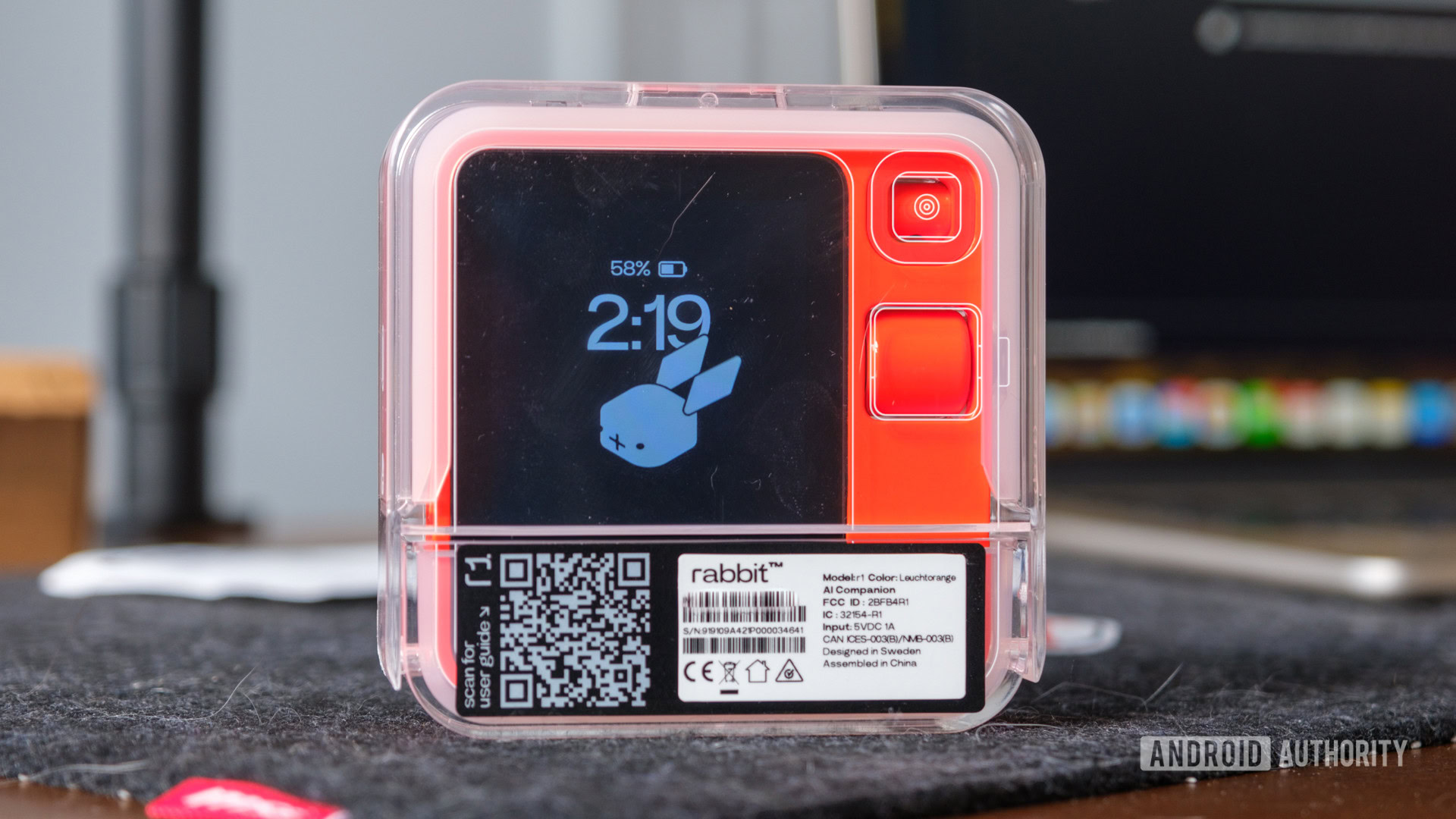
Remember when I explained that I wouldn’t be using the Rabbit R1 with a SIM card installed because I was counting that as a subscription fee? Well, that was also the final nail in the companion’s coffin. After my busy day of work, I headed to meet up with some friends at a local run club and figured I would have some chances to use the R1 after we logged a few miles. It was a hot spring day, and a few of us decided to head for ice cream to cool off.
I planned to tap away in Terminal Mode to make sure the ice cream shop was still open for the evening — another answer I already knew. It turns out that it was good I already knew the answer, because I couldn’t get the R1 to connect to my phone’s hotspot for the life of me. I’d already connected the two earlier in the day while asking about records, so I knew it wasn’t an issue on Verizon’s end, but there was nothing I could do to shake the R1 free of its funk. I tried forgetting the network and restarting the device to no avail.
So, that’s where my day of testing the R1 ended — with ice cream and a healthy dose of disappointment. Despite already knowing the answers to everything I asked, Rabbit’s bright orange plastic companion found different ways to come up short in just about every scenario I faced.
And somehow, there were features I hadn’t even touched.
Missing features and features missed
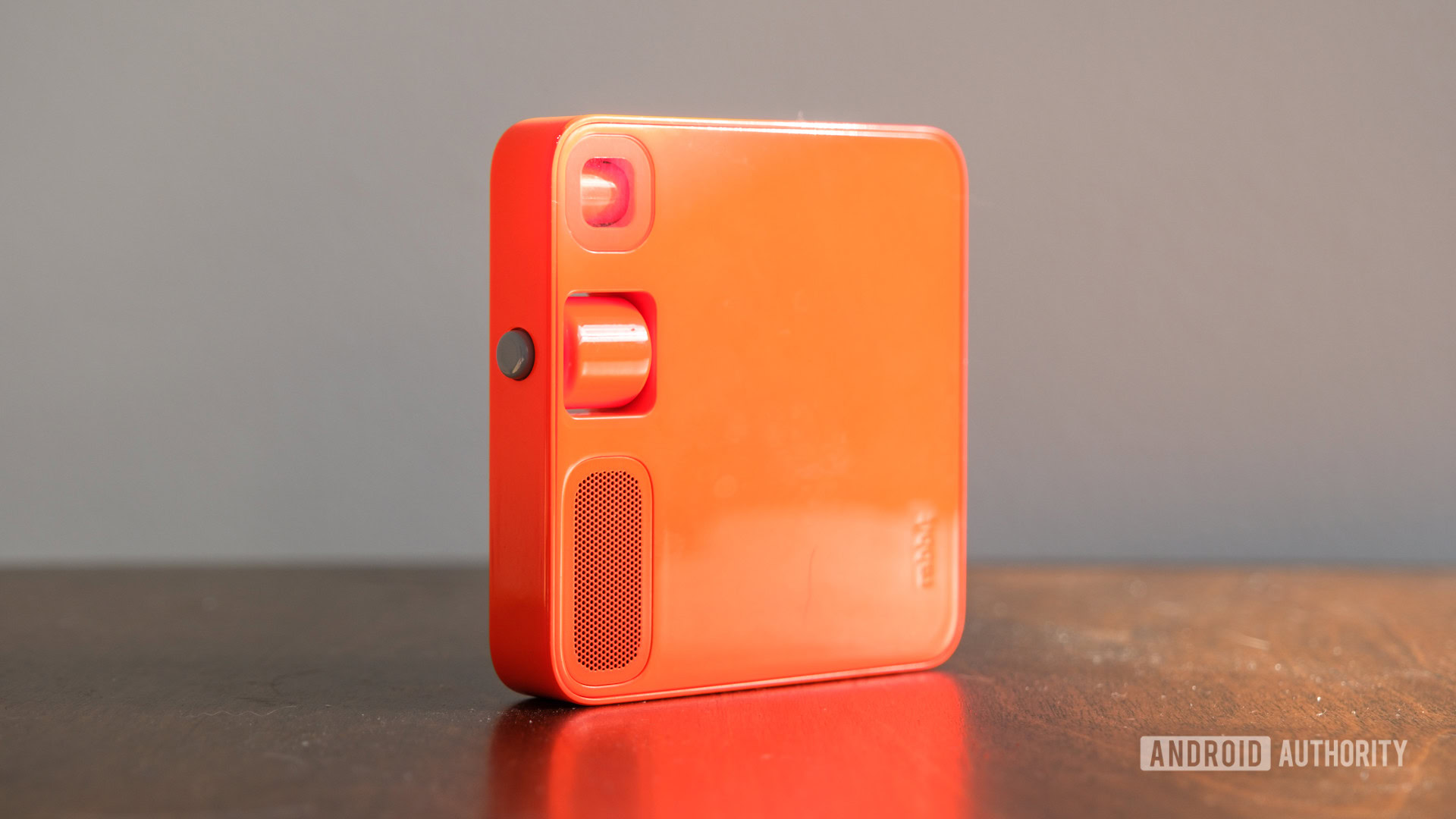
As you may have noticed, I didn’t hit all of the R1’s day-one features. Rather than modifying my day into a makeshift history lesson a la David Cogen (The Unlockr), I stuck to a standard workday schedule, meaning I didn’t need to call a ride via Uber or generate images using Midjourney. Had I ventured to the coffee shop that the R1 initially suggested, I might have tapped into Uber, but I’m not made of that kind of money when there are several options within biking distance. I didn’t tap into Rabbit’s two-way translation feature, either, which also saves notes directly to the Rabbit Hole.
There are probably a few other features you might have expected me to try on the R1 that your phone can already do, none of which I did. Not because I didn’t want to, but because the R1 can’t do them. The little AI-powered companion that’s supposed to make life easier than using your phone can’t text, set alarms or timers, check live sports scores, or place or receive video calls. Rabbit says some of those features might be coming eventually, but they’re likely still several months away. But also, can you imagine sending a text on the Rabbit R1’s tiny keyboard? I certainly can’t, it feels like typing on the Palm phone of yesteryear.
One of the keys to many of these upcoming features is what Rabbit calls Teach Mode. Essentially, it’s a forthcoming way to teach the R1 how to serve you better, using the Rabbit Hole to instruct the LAM how to do things like shop on Amazon, because when the robots take over, they’ll do so using our wallets. You walk through the process on a digital model of the R1, then the machine learns to replicate the process over time through repeated trials, kind of like riding a bike. It sounds great, and it’s clearly the way to get the R1 to deliver some of its loftiest promises without having to rely on further app access, only there’s no concrete indication of when Teach Mode will become available, and it’s hard to hold out hope that people will still care about the R1 by the time it does.
Thankfully, since my initial review, the team at Rabbit has been rolling out updates like, well, rabbits. The LAM Playground (which you can use to teach your R1) has launched, and the R1’s battery life has improved massively. However, like the initial R1 rollout, the LAM Playground still needs some adult supervision. I jumped in to test it with a few of the recommended prompts and quickly found that the R1 was not above cheating in order to get the right answer. It used the search bar while playing the Wikipedia game and almost immediately backed itself into a corner while searching for a blue phone case on Amazon (it refused to check a different case when blue wasn’t an option on the first one). So, back into the now-yellowed carrying case, the R1 went, and I’ll check on it again in a few more months.
Rabbit R1 review: 24-hour test final thoughts
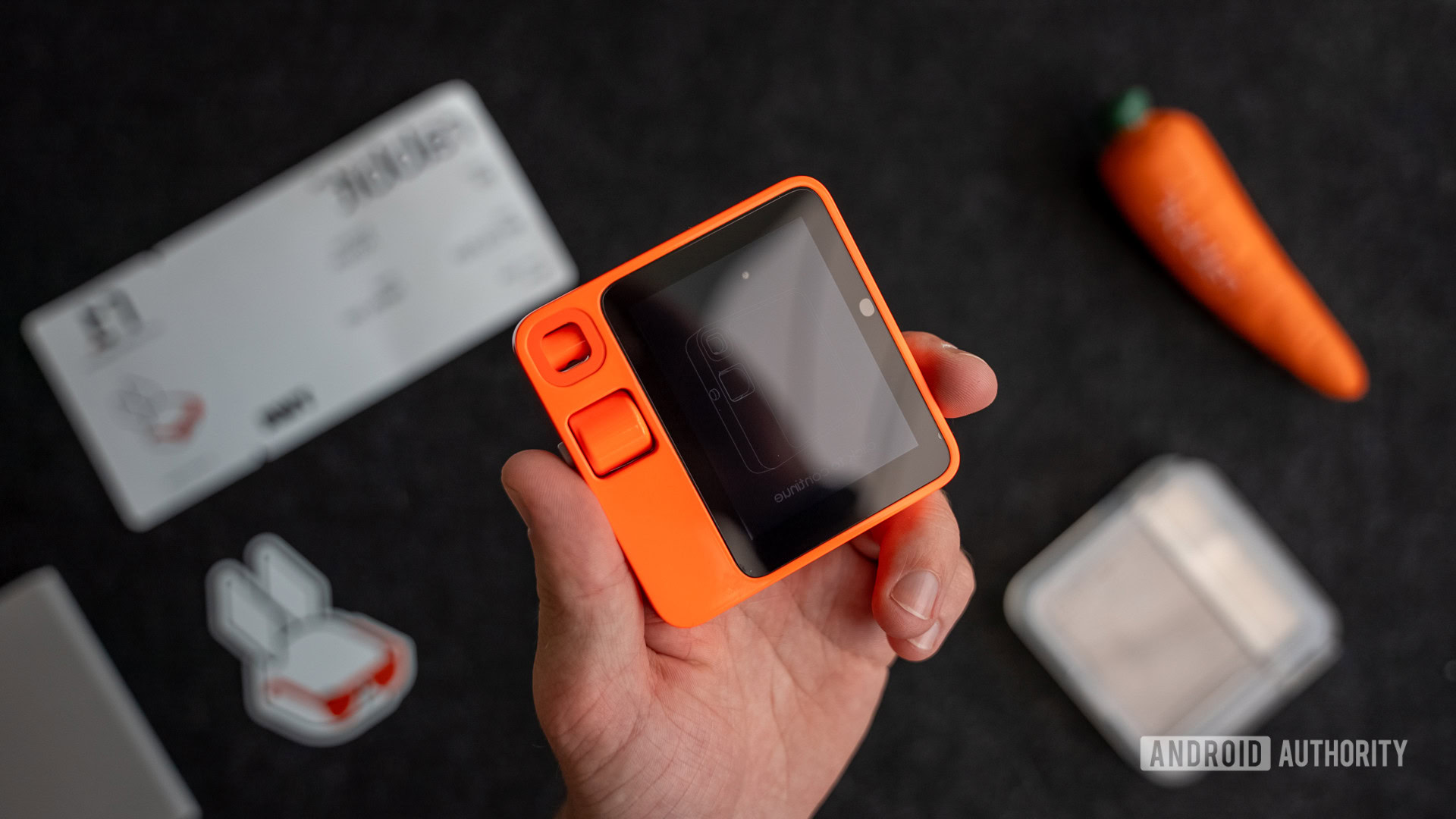
If my day of testing (or LAM Playground revisit) didn’t already make it abundantly clear, the Rabbit R1 isn’t there yet. It’s a cute little piece of hardware that I struggle to find tangible reasons to use or recommend. It felt like a blind squirrel finding a nut — well, half of a nut — when I got it to order DoorDash, and I felt like I could only half trust the R1 to answer questions correctly when asked. Vision Mode offers little information outside of what your eyes can see, and streaming through Spotify gives you little more control than listening to the radio.
The R1’s controls aren’t exactly intuitive, either. Navigating with the scroll wheel and multifunction button feels like you’re playing with a fidget toy, and the former doesn’t offer any sort of feedback beyond an artificial click to let you know as you go up and down in the menus. Even the process of opening the settings menu is a bit silly, requiring you to shake the R1 to access its volume, brightness, and current data connection. Better yet, you don’t shake to exit the menu — you use the multifunction button instead. It’s a needlessly complicated set of controls when everyone is already used to swipes and software-based buttons on their phones. Luckily, Rabbit has added a few new options for menu controls, meaning that you can now use buttons to enter and exit your settings, which is at least a little better.
On the bright side, the Rabbit team seems determined to roll out software updates early and often. Its first OTA patch vastly improved the battery life and made the scroll wheel feel a bit more responsive. Over time, the R1 should pick up plenty of new features, some through Teach Mode as explained above, but it still feels like a race against the clock that Rabbit can’t win. AI-powered features have already made their way to Google’s Pixel lineup and Samsung’s Galaxy devices, and it’s only a matter of time before Apple follows suit. Premium smartphones also run some AI features on-device, whereas the R1 is essentially a plastic conduit through which the cloud can flow. Don’t get me wrong; it’s a good-looking piece of plastic, but it’s an extra thing to stuff into your pocket.
Rabbit is running an AI-powered race against time that it can't possibly win.
Oh, and when asked why the Rabbit R1 isn’t just an app, well, it kind of is. As we revealed in our reporting, the entire interface runs through an APK that you can set up on another Android device with far more intuitive controls. It runs on Android 13, too, and isn’t based on a bespoke version of AOSP, as the company had suggested in response to our original reporting. That fact alone seems to underscore the point that even if AI-powered companions are the future, they sure aren’t going to look like the Rabbit R1. Maybe they’ll look like Humane’s Ai Pin with its Star Trek communicator design and laser interface, but the Rabbit R1 looks and feels like it wants to be a phone, but it just doesn’t know how.
If you really want to buy the Rabbit R1, you can do so below, but I’d recommend you save your $200 and use it to buy a pretty sweet Tamagotchi on eBay instead — at least, then you’re getting a finished product that doesn’t make promises it can’t keep.
